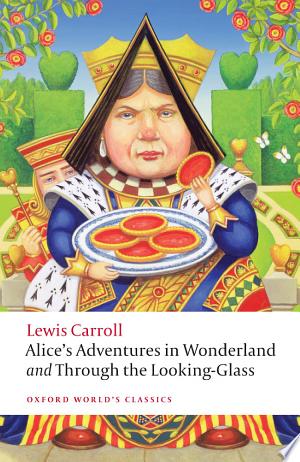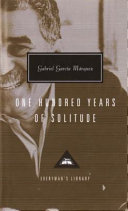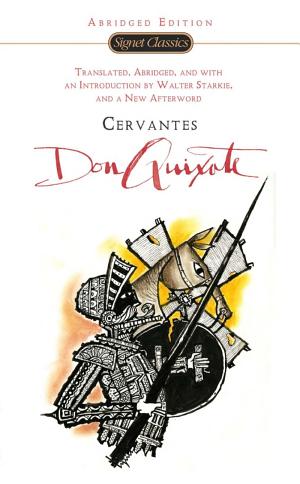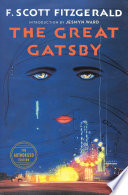Estimated read time: 10 min read
One Sentence Summary
A young girl named Alice falls down a rabbit hole into a whimsical world filled with strange creatures and absurd situations.
Table of Contents
Understanding the Context of Alice's Adventures in Wonderland
To appreciate "Alice's Adventures in Wonderland" fully, it's vital to understand the context in which it was written. Created by Lewis Carroll, this fantastical story draws on elements of whimsy, childhood curiosity, and complex philosophical ideas threaded through playful narratives. The book was published in 1865, a time of great change in England and a period that blended societal advancement with lingering traditions.
The Victorian era was marked by rapid industrialisation and expansion of the British Empire, which brought about significant cultural shifts. During this time, children began to be viewed as individuals deserving of education and entertainment, setting the stage for literary works that catered specifically to young audiences. Carroll's imaginative tale highlighted this perspective, depicting a world rich in imagination and freedom as a counter to the rigid, rule-driven nature of Victorian society.
The Author: Lewis Carroll
Lewis Carroll, born Charles Lutwidge Dodgson in 1832, was a mathematician, logician, and photographer, most famously known for his literary works, including "Alice's Adventures in Wonderland" and its sequel, "Through the Looking-Glass." His background in mathematics greatly influenced his writing style, which often incorporated logical paradoxes and absurdities. Carroll's ability to weave intricate wordplay into his narratives reflects both his creative genius and his education.
Carroll had a unique relationship with children, particularly with a girl named Alice Liddell, who inspired the character of Alice. His affinity for storytelling and playfulness shines through in his work, illuminating the joys and challenges of childhood exploration and learning. Throughout his life, Carroll sought to merge his intellectual pursuits with a profound love for children’s literature, successfully producing enduring pieces that continue to enchant readers today.
The Era: Victorian England
Victorian England, the backdrop for Alice’s adventures, was a complex time characterized by stark contrasts: wealth and poverty, progress and tradition. This was an age rife with strict social norms, where children were often expected to conform to adult expectations. However, the literary landscape began to shift, showcasing the importance of imagination and the inner worlds of children.
Within this societal framework, Carroll created a dreamlike narrative filled with absurdity, which served as a form of rebellion against the prevailing Victorian seriousness. By presenting a realm where logic is twisted and nonsense reigns, Carroll invites readers to escape the constraints of reality, highlighting the value of creativity and individual thought amidst societal pressures.
The Characters of Wonderland
The characters that populate Wonderland are as diverse and intriguing as the landscape itself, each contributing to the whimsical and often chaotic atmosphere of the novel. From the innocent and curious Alice to the eccentric inhabitants she encounters, these characters embody different facets of society and human nature.
Through her interactions with these fantastical beings, Alice’s character evolves, symbolizing the journey of self-discovery and the ongoing quest for understanding within a seemingly nonsensical world. Each character not only contributes humor to the narrative but also represents broader themes and ideas central to the story.
Alice: The Curious Protagonist
Alice, the embodiment of curiosity, serves as the story's guiding force. She is characterized by her adventurous spirit, leading her to question the world around her and challenge authority. Throughout her journey in Wonderland, Alice navigates bizarre situations and meets an array of eccentric characters that mirror her inner struggles and growth.
Her persistent curiosity often clashes with the absurdity of Wonderland’s rules, reflecting the intrinsic conflict between childhood innocence and the complexities of adult society. This tug-of-war propels the narrative, illustrating Alice's determination to assert her identity amidst chaos.
The Mad Hatter: A Peculiar Tea Party Host
The Mad Hatter, with his iconic hat and nonsensical riddles, represents the absurdity of time and the concept of madness. His infamous tea party with the March Hare and the Dormouse showcases the irreverent nature of Wonderland, where logic is a secondary concern. Instead, the bizarre customs and conversations that unfold serve as a critique of social norms and rationality.
Through the lens of the Hatter’s character, Carroll cleverly invites readers to rethink their understanding of time, sanity, and the importance of leisure. The Mad Hatter’s whimsical charm and puzzling behaviors reflect the complexities of the human psyche, making his character both endearing and thought-provoking.
The Queen of Hearts: A Tyrannical Ruler
The Queen of Hearts, infamous for her quick temper and decree of "off with their heads," embodies the theme of power and authority's unpredictability. Her character underscores the arbitrary nature of rules in Wonderland, as she wields power with little justification or reason. She serves as a contrast to Alice, showcasing the harsh realities of authority and control.
Moreover, the Queen's reign reflects the absurdities present within systems of power. She is both a figure to be feared and a source of humor, illustrating how authority can often be both tyrannical and ludicrous. The encounters with the Queen highlight Alice's desire for autonomy and justice, underscoring her transformation throughout the story.
The Plot: Alice's Journey Through Wonderland
The narrative follows Alice as she embarks on an unexpected adventure through Wonderland after falling down a rabbit hole. This initial plunge symbolizes a departure from her mundane reality and sets the tone for the strange encounters that await her.
As Alice navigates Wonderland, she finds herself in a strange realm where the ordinary rules of logic no longer apply. Through various challenges and surreal experiences, she confronts her identity and understanding of the world around her.
Alice's Fall into the Rabbit Hole
The story begins with Alice encountering a White Rabbit and following him down a mysterious rabbit hole, which serves as a metaphor for her leap into an unknown world filled with imagination and unpredictability. This descent marks the beginning of a series of fantastical adventures that challenge her perceptions and spark her curiosity.
Alice's initial bewilderment is relatable, as she grapples with her new surroundings and the peculiar inhabitants of Wonderland. This moment captures the essence of childhood exploration, where the desire to discover the unknown overshadows fears and uncertainties. It sets the stage for a narrative filled with layers of meaning and whimsy.
The Mad Tea Party
One of the most iconic scenes in the story occurs during the Mad Tea Party. This event highlights the nonsensical nature of Wonderland, where time and logic fluctuate. The absurd conversations shared between the Mad Hatter, March Hare, and Dormouse reflect the chaotic essence of Wonderland's social dynamics.
This whimsical gathering is not just a display of absurdity; it also serves as a platform for Alice to assert her perspective. Her frustration with the nonsensical dialogue underscores her quest for identity and understanding within a world governed by chaos. The tea party exemplifies the power of imagination while showcasing the complexities of communication and relationships.
The Queen's Croquet Ground
The encounter in the Queen's croquet ground is another significant moment in Alice's journey. The game, played with live flamingos as mallets and hedgehogs as balls, epitomizes the absurdity of Wonderland and the whimsical rules that dictate the inhabitants' actions. Here, Alice continues her struggle against the absurdity and tyranny of authority as represented by the Queen.
This chaotic game reveals the arbitrary nature of power and governance within Wonderland. Alice’s growing confidence and assertiveness are evident here as she learns to navigate the absurdity surrounding her. The croquet match serves as a microcosm of the broader themes of control and the interplay of chaos and order, further emphasizing Alice's character development.
Themes and Symbols in Alice's Adventures
"Alice's Adventures in Wonderland" is rich with themes and symbols that invite deeper analysis and reflection. The stories' eccentric characters and surreal experiences serve as a canvas for exploring profound notions such as identity, curiosity, and societal norms.
The interplay of these themes not only contributes to the narrative's whimsy but also underscores the philosophical underpinnings that have kept readers captivated for generations. Carroll skillfully intertwines humor and depth, cultivating a text that resonates with audiences of all ages.
The Absurdity of Life
One of the central themes of the narrative is the absurdity of life. The unpredictable nature of Wonderland serves to challenge traditional notions of logic and reason. Through Alice's interactions with characters like the Mad Hatter and the Queen of Hearts, Carroll emphasizes the nonsensical elements of existence, inviting readers to embrace the chaos rather than resist it.
This theme resonates strongly with the human experience, suggesting that life is inherently unpredictable. The absurd characters and situations reflect the complexities of navigating reality, encouraging readers to find humor and joy amidst confusion and chaos.
The Loss of Innocence
The journey through Wonderland also encapsulates the theme of the loss of innocence. As Alice encounters various characters and experiences, she confronts challenges that reflect the transition from childhood to adulthood. The whimsical adventures of Alice contrast with the harsh realities she faces, mirroring the complexities of growing up.
Carroll's portrayal of this theme invites readers to reflect on their own journeys of maturation, suggesting that while challenges may arise, the spirit of curiosity and wonder remains a vital part of personal growth. Through her experiences, Alice embodies the struggle to reconcile innocence with the often confusing adult world.
The Power of Imagination
Finally, the theme of imagination serves as a cornerstone of the narrative. Wonderland itself is a manifestation of the boundless creativity inherent in childhood. Through Alice's adventures, Carroll highlights the significance of imagination as a means of self-expression and understanding.
In a world where logic is secondary, the ability to dream and envision takes center stage. Alice's journey exemplifies the transformative power of imagination, showcasing how it can offer refuge from the constraints of reality and inspire endless possibilities. This affirmation of creativity encapsulates the essence of childlike wonder, inviting generations of readers to embrace their imaginations.
In conclusion, "Alice's Adventures in Wonderland" stands as a timeless classic, rooted in themes of identity, imagination, and the absurdities of life. Through Alice's curious explorations, Lewis Carroll invites readers into an enchanting world that challenges conventional wisdom and celebrates the power of creativity.
Alice's Adventures in Wonderland FAQ
What is the plot of Alice's Adventures in Wonderland?
Who wrote Alice's Adventures in Wonderland?
When was Alice's Adventures in Wonderland first published?
Is Alice's Adventures in Wonderland appropriate for children?
Are there any movie adaptations of Alice's Adventures in Wonderland?
Is Alice's Adventures in Wonderland part of a series?
What are some notable characters in Alice's Adventures in Wonderland?
Is Alice's Adventures in Wonderland a fantasy book?
Is Alice's Adventures in Wonderland a challenging read?
What is the theme of Alice's Adventures in Wonderland?






